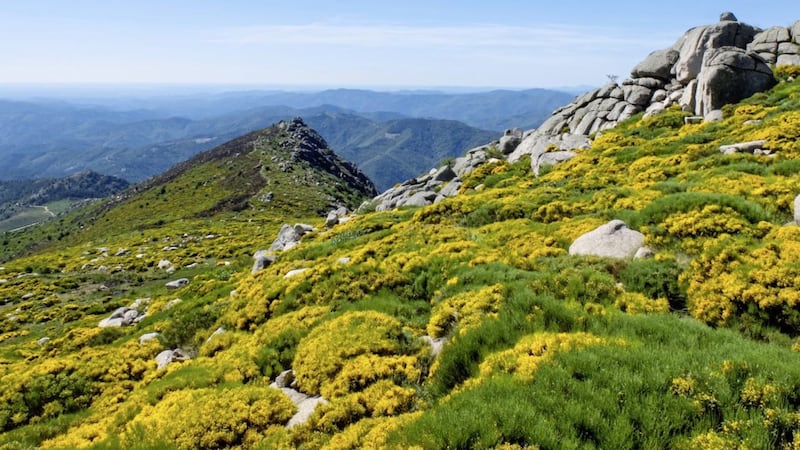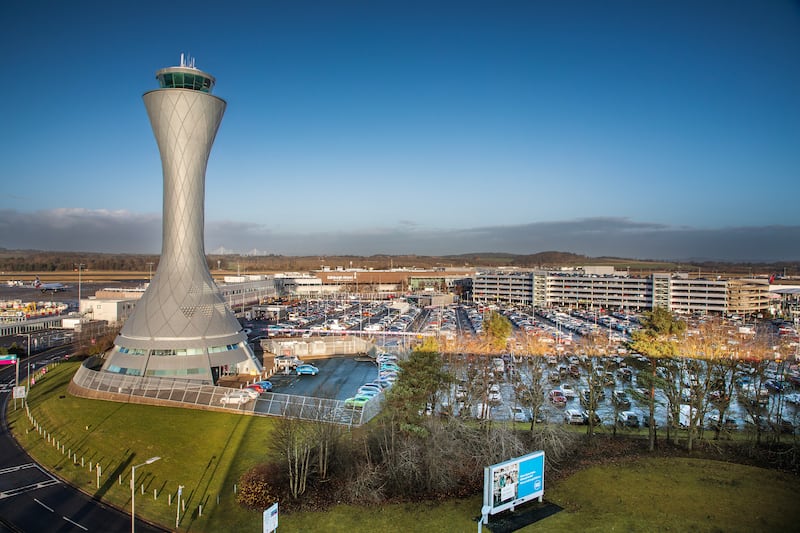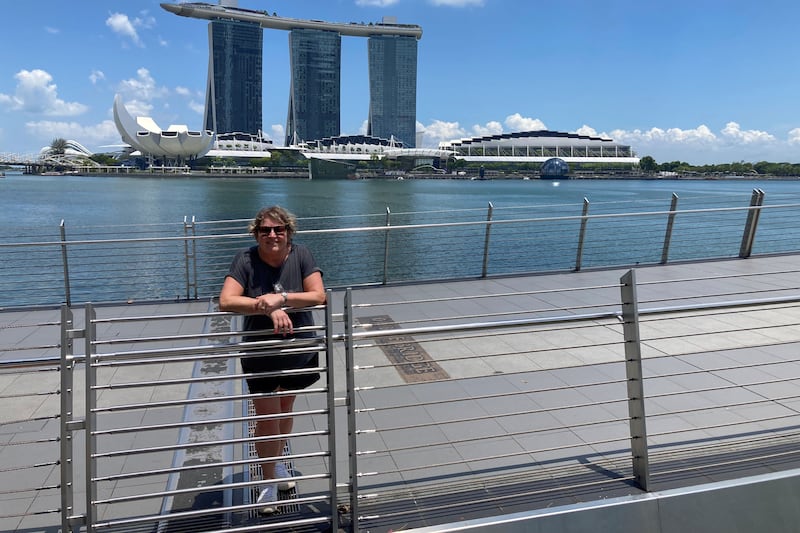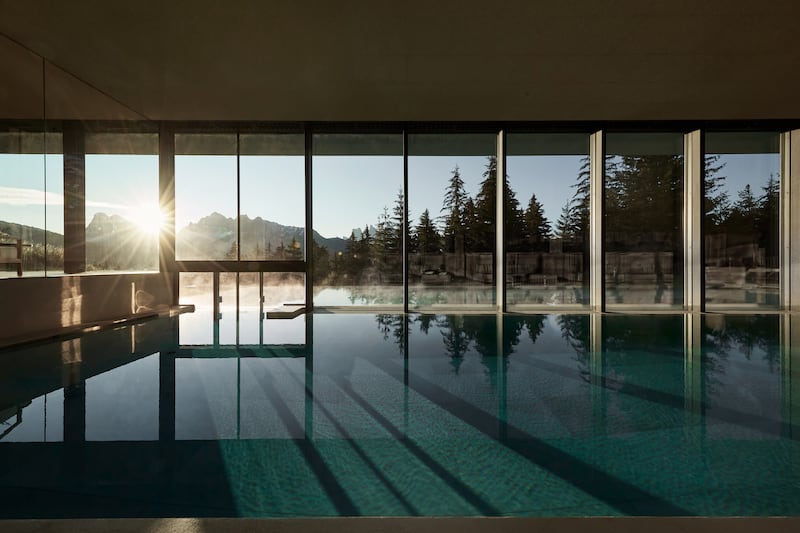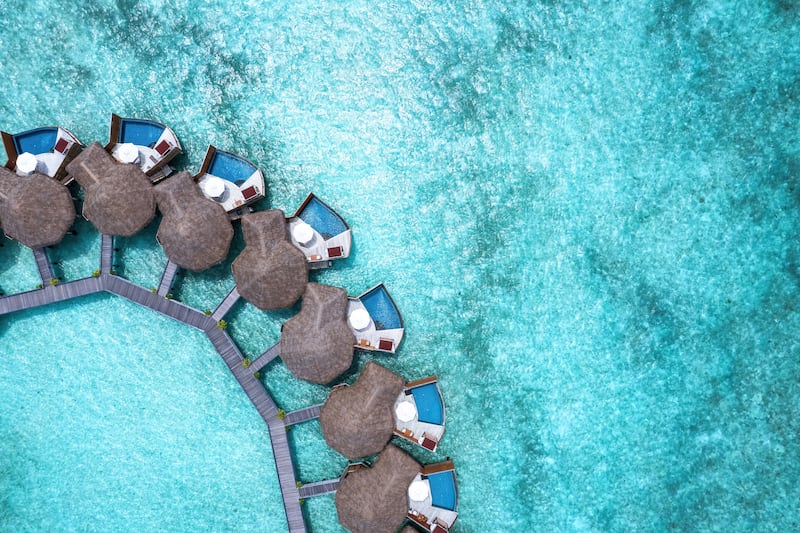LONG lizards scurry up moss-covered craggy rocks and walls, while the deafening courtship calls of cicadas reverberate across the peaks of the Cévennes mountains. This region, a 90-minute drive from Montpellier and Nîmes, lies to the north of the French Mediterranean lowland and although busy with tourists in the summer is under-visited the rest of the year.
The delightfully unspoilt landscape of small medieval villages clinging to the steep slopes became known to the young writer Robert Louis Stevenson when he made his celebrated trip with a donkey through the area in autumn 1878. He kept detailed notes of his solo ramble which inspired his classic work Travels With A Donkey In The Cévennes.
His donkey, called Modestine, carried food, tools, a lamp and candle, a gun and a bottle of Beaujolais. He wrote that it had ‘"a kindly eye, a determined under-jaw and a sober daintiness of gait".
One hundred and forty years on, the area through which Stevenson travelled for 12 days remains a brooding landscape and has entered part of French folklore. Redolent of an older France, the Cévennes is a mix of steep cliffs, extensive forests, shale, granite and open plateaux.
The writer is now immortalised in the RLS Trail which has become a well-known 140-mile route across the hills and valleys of rural France. It runs from Le Monastier-sur-Gazeille to St-Jean-du Gard and is one of the most historic long-distance trails with 6,000 hikers each year. Look around and it is not hard to see why Stevenson imagined himself one hundred miles from civilisation:
“My road lay through one of the most beggarly countries in the world. It was like the worst of the Scottish Highlands, only worse; cold, naked, and ignoble, scant of wood, scant of heather, scant of life.”
A combination of walking, cycling and driving is the best way to get a feel for the area where the fragrance of thyme percolates the hillsides and the ancient drove roads known as drailles. Swathes of common French broom, locally called genet, are prominent on the roadsides amid jungles of fern and bracken. A network of zigzag roads passes the slopes of the Cévennes along the scenic hairpins of La Grand Combe road where hillsides are dark green with holm oak, beech, mulberry and ash. In its autumnal glory it is a paintbox mixture of gold, yellow and russet with enormous chestnut trees.
My journey takes in the southern stage of the trail linking the Cévenol riverside towns of Florac and Le Pont-de-Montvert, as well as the rounded hill of Mont Lozère, the highest point in the region with extensive views.
On a walk with some light scrambling over rocks the habitats are made up of a mosaic of forests, grasslands and heaths reflecting the diversity of the landscape. The area is noted for its dramatic canyons alongside dolmens, standing stones and burial mounds and has the second largest concentration of megalithic monuments in France after Carnac in Brittany.
It bears a remarkable similarity to Ireland, especially the karst formation of the Burren in Co Clare, famed for its limestone pavement, stonewalls, boulders and green valleys.
Towering over Florac is the Causse Méjean, one of the least populated areas of France, primarily used for grazing sheep. The causses are a series of undulating uplands, divided by deep river gorges. High above, birdlife includes merlin, hen harriers and sparrowhawks and you may catch sight of a griffon vulture spiralling upwards on hot air currents.
The crumbly and tangy Roquefort cheese, made from the milk of ewes who graze on the plateau of the causses, and known in France as the cheese of kings and popes, will set you up for lunch along with a nourishing bowl of chestnut soup and baguette.
Le Pont-de-Montvert is a likeable town where the River Tarn rushes under a 17th century Gothic bridge beside an historic clock tower. Village life centres on the riverside embankment where shops and cafés huddle under the leafy branches of multi-limbed plane trees with stall holders selling their fruit and veg.
In the middle of the Cévennes National Park – the only inhabited one in France – several ancient houses have been lovingly restored as visitor accommodation. Ever since the 15th century, La Donzelenche has been a collection of agricultural buildings, or Mas, and is now an idyllic place to stay.
Buttterflies and birds move through the fruit gardens and meadows and later in the evening bats skim around the outbuildings. An affable Dutch couple, Eva and Hans, have renovated a pig house and storage areas into three gîtes.
"We are still living," Hans says, "in the land a plenty with many insects, a range of woodland birds such as tits, finches and warblers, while in the spring we have the wonderful song of the nightingale. We also have toads here which have disappeared from many other parts of Europe."
There is an aura of remoteness and a profound peacefulness to the Cévennes. Hiking in Stevenson’s footsteps is a thread that links people to the area. Local guide Vincent Molines sees him as an ambassador of the region.
"The people who come to hike his route are a like-minded community who meet on the trek, become friends and stay in touch. It is like a small version of the Camino and the trail is now a cultural route of the Council of Europe."
Images of Stevenson stare out from postcard racks and signboards, along with maps and books, while memories of his trip are kept alive through the Association Sur le Chemin de RL Stevenson.
Journey’s end is the attractive town of St-Jean-du-Gard where a plaque commemorates the writer and his faithful companion. The town square is the ideal place to relax with an unfiltered Stevenson craft beer and reflect on the Francophile Scottish adventurer’s reason for travel as outlined for literary posterity in his book: "For my part, I travel not to go anywhere, but to go. I travel for travel’s sake. The great affair is to move; to feel the needs and hitches of our life more nearly; to come down off this feather-bed of civilisation and find the globe granite underfoot and strewn with cutting flints."
FACT FILE
Flights:
:: Aer Lingus flies from Dublin to Montpellier from where the main car hire agencies operate. See aerlingus.com. Alternative flights from Belfast International Airport are to London-Stanstead with EasyJet (easyjet.com) and on to Nimes with Flybe (flybe.com). Prices vary according to time of year.
Accommodation:
:: La Donzelenche, 48220 Vialas; prices depend on when you visit but a two-night weekend stay in the low season costs from €275 for two (donzelenche.com/en).
:: La Source de Castagnols, 48200 Vialas, restored 17th century farmhouse, double rooms from €100 in low season (castagnols.com.en)
Tourist information:
:: tourism-occitania.co.uk; gardtourism.com; lozere-tourisme.com; chemin-stevenson.org
